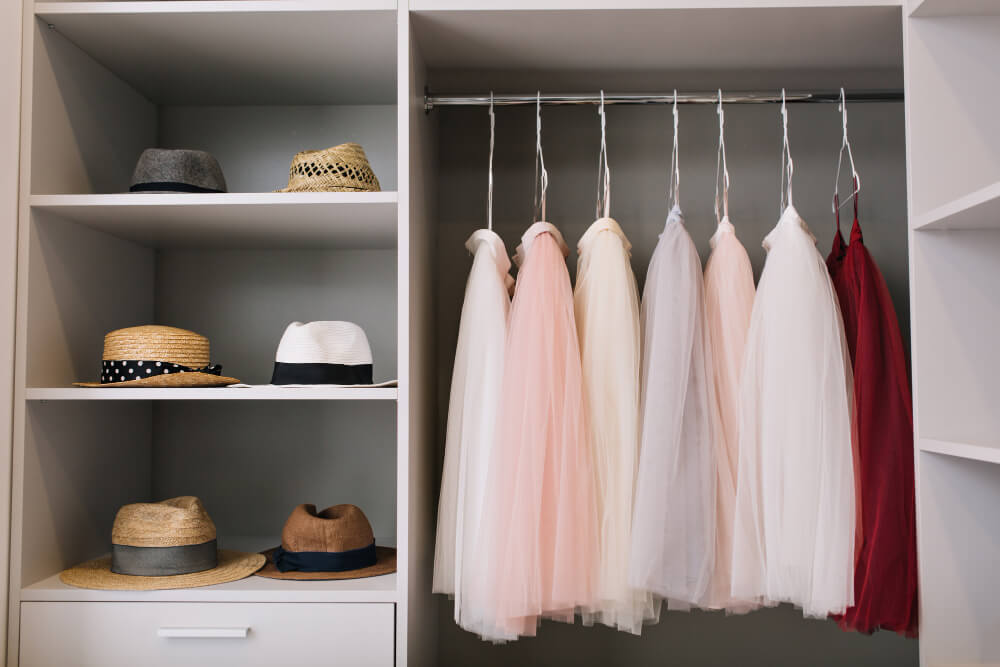Recycled materials are steadily changing the fashion business as consumers become more environmentally conscious. Growing customer demand for sustainability makes the waste-to-wardrobe transition more critical than ever. The journey is about questioning fashion consumption and what happens to old garments, not simply recycling materials.
We’ll examine how recycled fabrics transform abandoned clothes into beautiful, sustainable items while reducing waste, saving resources, and shaping fashion.
We’ll examine how recycled fabrics transform abandoned clothes into beautiful, sustainable items while reducing waste, saving resources, and shaping fashion.
Problem: Textile Waste
The world discards millions of tons of textiles annually. The Ellen MacArthur Foundation reports that 87% of textile fiber is burnt or dumped. Fast fashion contributes to this waste by producing and discarding clothes quickly.
Wasted resources and pollution affect the ecosystem, but it also presents great reform opportunities. Textile recycling may decrease landfill waste, water use, and pollutants.
Partnerships with secondhand businesses, organizations, and charities are crucial. Silk Grand works with suppliers to acquire post-consumer apparel and fabrics to avoid landfills.
Wasted resources and pollution affect the ecosystem, but it also presents great reform opportunities. Textile recycling may decrease landfill waste, water use, and pollutants.
Partnerships with secondhand businesses, organizations, and charities are crucial. Silk Grand works with suppliers to acquire post-consumer apparel and fabrics to avoid landfills.
Sorting and Collecting Used Textiles
Textile recycling begins with collecting and sorting. Many secondhand businesses, charity shops, and recycling programs take worn clothes and textiles, avoiding landfill waste. Specialized facilities sort clothing by kind, material, and condition. Good items may be resold or presented, while damaged ones are recycled.
The Sorting: Materials Matter
The fabrics are sorted after collection. This step is vital since certain textiles recycle better than others. Cotton, wool, and hemp are ideal for recycling since they can be broken down and re-spun into yarns. Polyester and nylon might also be recycled, but they must be melted first.
Modern technology can sort textiles by fiber, color, and texture. It lowers harsh chemicals and dyes in recycling to make it greener.
Modern technology can sort textiles by fiber, color, and texture. It lowers harsh chemicals and dyes in recycling to make it greener.
Transformation: Shredding and Spinning
After sorting, textiles are recycled. Natural fiber clothes are shredded and converted into pulp, which is spun into yarn to make new textiles and outfits.
Melting synthetic textiles into pellets allows them to be reformed into fibers and threads. These recycled fibers are as strong as virgin fibers and use less petroleum (for synthetics) and water (for cotton).
Melting synthetic textiles into pellets allows them to be reformed into fibers and threads. These recycled fibers are as strong as virgin fibers and use less petroleum (for synthetics) and water (for cotton).
Making Old Fabrics New
After sorting, textiles are recycled. Natural fiber clothes are shredded and converted into pulp, which is spun into yarn to make new textiles and outfits.
Melting synthetic textiles into pellets allows them to be reformed into fibers and threads. These recycled fibers are as strong as virgin fibers and use less petroleum (for synthetics) and water (for cotton)
What Makes Recycled Textiles Important
- Resource Conservation: Textile recycling saves water, energy, and oil from fabric production.
Lower Carbon Footprint: Recycled textiles emit less greenhouse gas than fresh ones. - Waste Reduction: Recycling clothes and fabric scraps reduces textile waste in landfills and incinerators.
- Fashion Innovation: Recycled materials inspire fashion brands to combine sustainability with innovation and design.
Future: Circular Fashion Economy
Textile recycling is just part of the solution. The ultimate objective is to build a circular fashion industry that designs, produces, and consumes garments to decrease waste and increase endurance. Focus on durability, repairability, and resale value as well as recycling.
Consumers are key to this transition. A circular fashion system may be implemented by buying recycled clothing, donating or recycling old items, and supporting sustainable companies.
Consumers are key to this transition. A circular fashion system may be implemented by buying recycled clothing, donating or recycling old items, and supporting sustainable companies.
Conclusion
Waste-to-wardrobe is reinventing the fashion business for sustainability. As recycled materials become more popular, our clothing choices will have less environmental effects. With increased understanding and technology, fashion will be more stylish and sustainable.
When buying garments, consider the fabric’s history. Your recycled clothes help close the fashion industry loop one wardrobe at a time.
When buying garments, consider the fabric’s history. Your recycled clothes help close the fashion industry loop one wardrobe at a time.



